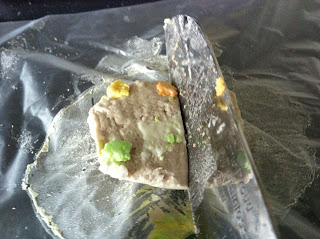Hard copy Journal
Yeah...Since the concept of online journals was new to me, and I wanted to work in school but didn't have a laptop, well most of my initial brainstorming and lists of variables and whatnot are on paper. Very messy paper. So, here (clicking will enlarge the scans):
This is the preliminary brainstorming, when I haven't even settled what to cook. It started with dumplings (which then led to questions about consistency and factors involved), but then Ms Tan suggested fish balls...The format of my results were xy graphs pretty much from the start though, and this was also when the infamous Image-J debuted.
Variables/constants/likely relationships between them hashed out during science block, note the top with hastily scrawled ideas from discussing with others.
The difference between a theoretical experiment (and tables) with square tangyuan (in pencil) dreamt up during class and the actual trial with round tangyuan (in pen) developed after actually trying it. Who knows, there is a reason why generations of Asian women make balls instead of blocks. Also, see how the measurements ended up being halfway across the page because there wasn't enough space.
Cleaned up version of the table, still with random bits of data everywhere they're not supposed to be of course, plus reflections for the trials below.
Number crunching time after trials 1 and 2. The top part is feedback from friends who took a look at my blog so far, bottom is the data for density used while discussing the results with Ms Tan.
Working for the new shape of tangyuan (same surface area, different volume), and finally getting it.
Trial 0 and the actual experiment...
(p.s. If you're wondering why there're strange bulges all over the paper, why yes, I did spill water on it while cooking tangyuan.)













.JPG)

.JPG)

.JPG)
















